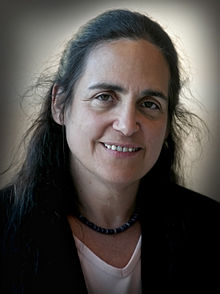 The first edition cover of the book. | |
| Author | Margot Adler |
|---|---|
| Language | English |
| Subject | Sociology of religion, History of religion |
| Publisher | Viking Press |
Publication date | 1979 |
| Publication place | United States |
| Media type | Print (Hardcover & Paperback) |
| OCLC | 515560 |
| 299.94 | |
| LC Class | BF1573 |
Drawing Down the Moon: Witches, Druids, Goddess-Worshippers, and Other Pagans in America Today is a sociological study of contemporary Paganism in the United States written by the American Wiccan and journalist Margot Adler. First published in 1979 by Viking Press, it was later republished in a revised and expanded edition by Beacon Press in 1986, with third and fourth revised editions being brought out by Penguin Books in 1996 and then 2006 respectively.
Contents
- Background
- Paganism and Wicca in the United States
- Adler and her research
- Synopsis
- Republication
- 1986 revision
- 1996 revision
- 2006 revision
- Reception
- Academic reviews
- Other reviews
- Influence
- Pagan community
- Academia
- Editions
- References
- Footnotes
- Bibliography
- Reviews
- Interviews
According to The New York Times , the book "is credited with both documenting new religious impulses and being a catalyst for the panoply of practices now in existence" [1] and "helped popularize earth-based religions." [2] Adler was a Neopagan and "recognized witch" [1] herself and a reporter for National Public Radio. [3]
The book is an examination of Neopaganism in the United States from a sociological standpoint, discussing the history and various forms of the movement. It contains excerpts from many interviews with average Pagans, as well as with well-known leaders and organizers in the community.
The first edition of the book sold 30,000 copies. [4] Successive versions have included over one hundred and fifty pages of additional text and an updated contacts section. It has been praised by Theodore Roszak, Susan Brownmiller, The New York Times Book Review and the Journal of the American Academy of Religion . [5]
